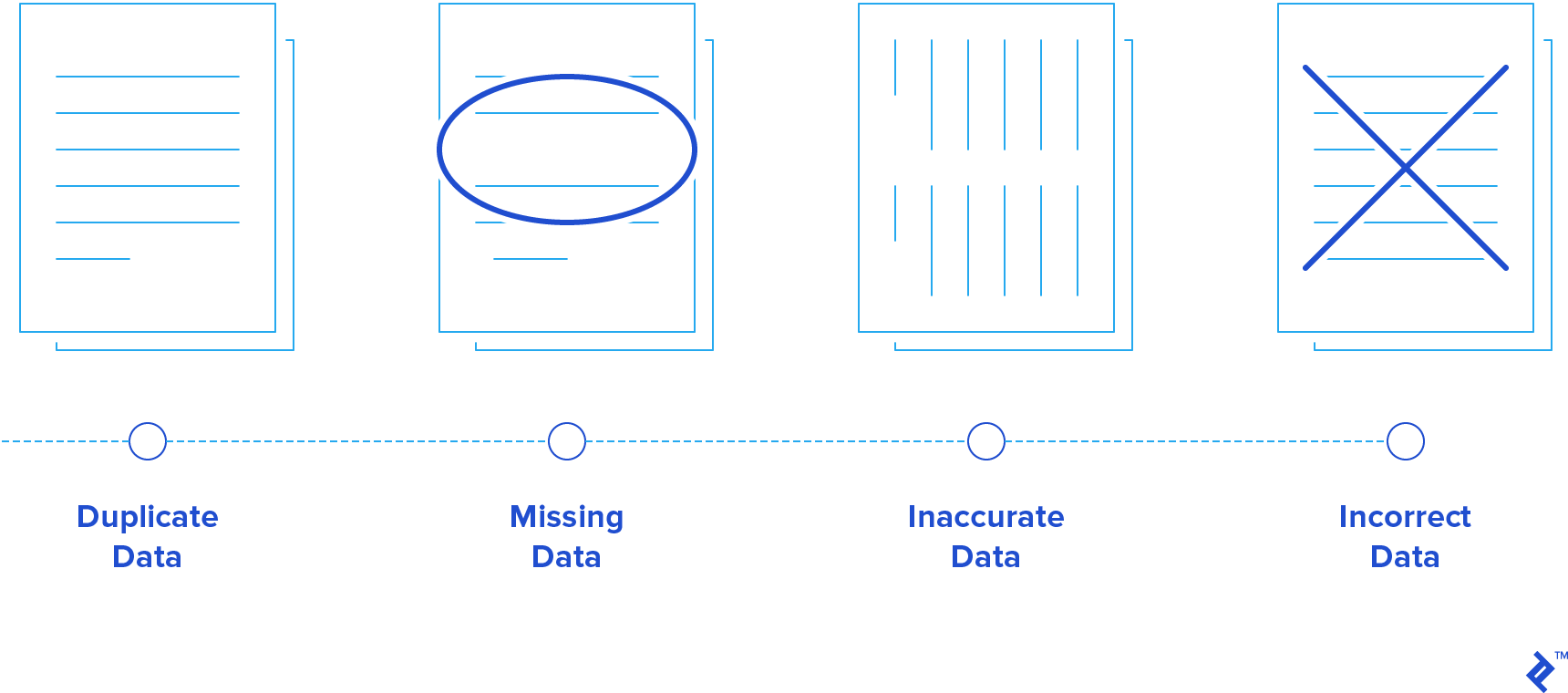Product Management Empowered by the Entrepreneurial Mindset
Successful product managers channel their inner entrepreneur to deliver outstanding products. Sometimes referred to as mini-CEOs, product managers can learn valuable lessons from entrepreneurship.
Successful product managers channel their inner entrepreneur to deliver outstanding products. Sometimes referred to as mini-CEOs, product managers can learn valuable lessons from entrepreneurship.
With 22+ years as an entrepreneur, Steve combines business & technical excellence to create winning solutions for pressing customer problems.
Expertise
PREVIOUSLY AT

While there are undoubtedly many different perspectives on what makes a great product manager, those with an entrepreneurial mindset tend to be the most successful. In many ways, a great product manager essentially is an internal entrepreneur, relentlessly championing product ideas, and creating value from inspiration. While this may be somewhat obvious in the context of a startup rising like a rocket ship, it’s equally important in mid-to-large size organizations as well.
The typical image that springs to mind, when thinking of a successful entrepreneur mindset, is that of a risk-taking visionary who pursues opportunities with relentless energy and drive—ultimately enjoying tremendous success—against all odds. While the reality is often far less glamorous for entrepreneurs working in the trenches of the modern business world, these traits are often what fuel winning product leaders.
Product Manager Is a Storyteller
It’s easy to look back at a particularly successful product and think that success was inevitable. But from the perspective of product entrepreneurship, when the only thing that the product manager has in hand is the seed of an idea, the road ahead is fraught with peril. Will this idea soar like the next Google Search or sink like the next Google Glass?
Predicting the future is near impossible at the best of times but when there are significant investments of time and money on the line, it takes an iron will to lean into that type of risk. Add in the organization’s internal resistance to change which new ideas often encounter and the risks multiply. Entrepreneurial product managers don’t just recognize this reality—they embrace it as the surest sign that they are on the right path to a winning and potentially groundbreaking product idea.
Risk is one of those barriers to entry that helps keep competitors at bay and makes a product idea worth pursuing. Being aware of and mitigating that risk is a core responsibility of an entrepreneurial product manager.
So how do you “lean in” to a new product idea? The key to convincing both yourself and others about the power of your idea is to develop the story around it. While the immediate product manager approach may be to develop user stories, be sure to tell The Story of the idea at a higher level before sinking too deep into the use case details. The Story you’ll develop is more than an elevator pitch but much less than a business plan. It has to be clear, concise, and compelling. Telling the story in this way helps develop a common understanding of the concept within the organization and highlights its potential. Be sure to focus on the value that the product idea will bring to clients as you develop the story around it. Also, be sure to confront challenges to the idea and potential risks head-on by folding them into the overall story.
Distilling the Product Vision
The ability to metaphorically get inside a client’s mind and see what an idea can become, and to consider the organization’s strategic goals projected against the potential market is the root of what it takes to be a visionary in this context. The challenge is whether or not the vision can be translated into a real product that a real market is willing to buy.
Distilling a clear and compelling vision for a product is similar to the difficulty in recognizing a great product idea when it exists only in the abstract. The difference is that this vision extends on past the first iteration of the product and stretches out into adjacent products, categories, markets. In determining what a product should be when it grows up, the entrepreneurial product manager holds the concept up to the light of that vision to define the art of the possible and ultimately distill it down to the art of the probable.
How do you define the probable? After you’ve developed The Story around the near-term value of the idea, project that thinking further out into the future. Think of compelling examples of what the product can be two, three, five years from now. What impact could it have on the people using the product? Can the product be a platform for future ideas or other products? What will happen in the market and with the product as your offering matures?
Once you’ve reflected on the possible futures, unwind those thoughts into the logical steps it would take to get there. Refining the vision and breaking it down into its component parts helps articulate a map of how to get there and how to refine the possible into the probable.
The Habit of Identifying New Opportunities

“There has to be a better way” has been the mantra of many entrepreneurs. Steve Jobs’ return to Apple was marked by his inspired re-imagining of the Walkman. He felt there had to be a better way to enjoy music on-the-go than fumbling with tapes, batteries, and clumsy headphones. Turns out, he was onto something.
The ability to take everyday experiences, deconstruct them, and put forward that “better way,” is another hallmark of entrepreneurs and inspired product managers. “It can’t be done” or “We’ve always done it this way” are clear indications of the next opportunity. What’s more, it becomes the lens through which the world is viewed. Whether it’s a small feature or a major product, the best product managers can’t help but look at each and every challenge as an opportunity to make things better.
Identifying the opportunities around you is akin to building a habit. The more you practice, the more natural it becomes until you can’t help but see that the world is full of potential. Hidden behind the notion of “there has to be a better way” is a sense of frustration with the way things are currently done. Be aware of, and try to tune into, those hints of frustration as a cue to the next opportunity. Make it a daily focus and before long you’ll see opportunities everywhere.
In some cases, your clients will state their dissatisfaction quite plainly. But sussing out the more subtle choke points and seeing them for what they are can lead to significant product and revenue growth.
Infectious Energy and Collaboration
Not surprisingly, a product manager is often the linchpin between many varying stakeholders, particularly engineering, marketing, sales, and clients. Collaborating with so many functions, especially when your role as a product manager has no direct authority over the participants, requires energy, drive, and dogged persistence.
There will always be times when things get bogged down and forward momentum slows. Things take longer than anticipated or an unforeseen technical difficulty arises and must be addressed. A strong bias towards action and a willingness to roll up your sleeves and dig in helps maintain the momentum which in itself creates energy and drive in the team to see things through.
There are countless stories of celebrated entrepreneurs who had their backs against the wall but through fierce determination and sheer force of will managed to keep it all together. There aren’t nearly as many heroic stories with a protagonist product Manager but I’d be willing to bet there was one behind the scenes of many of these trials by fire.
Persevere During Hard Times
The first thing to remember is that product management is a team sport. Pull the team together and brainstorm new ideas to get around the roadblocks. Don’t hesitate to reach out to other teams as well, particularly if their areas of expertise are different from the core team’s capabilities.
Many times, product delivery dates slip because the code is being delivered late to the QA team. As the resident expert in the product, sometimes all it takes is to roll-up your sleeves and start testing. Not only does this help advance the timelines, but it also demonstrates to the team that you’re as committed as they are to do whatever it takes to get things done.
Also, be sure to celebrate the small wins along the way. Nothing builds teams and enthusiasm more than the positive reinforcement that comes from shared excitement and recognition, particularly when you’ve all pulled through the challenge together.
Working With Limited or Imperfect Data

Data drives our world and great business leaders gather as much relevant data as possible and use it to their advantage. Similarly, informed product managers lean heavily on user data, sales or marketing data, client feedback, support cases, and much more. They follow wherever the data leads, ensuring that they do more of what works and less of what doesn’t.
But what happens when there is no data? This is often the case when blazing trails with new products that don’t cleanly fit into existing categories. You can rely on the latest musings of industry analysts and do your best to extrapolate from meager data but crucial decisions often have to be made when data is lacking or ambiguous.
The most effective product managers realize that there’s no such thing as perfect information and that it’s critical to continue moving forward even with limited data. By keeping an ear to the ground, the data that naturally flows from that forward motion will help inform the things you choose to repeat as well as those you’ll learn not to try again.
The data you gather and the metrics you monitor will vary depending on the product you’re building but among the common ones are subscription growth, monthly recurring revenue, churn, client acquisition cost, and lifetime value. The easy part is when the data is readily available and the signals are clear. Do more of what’s working and do less of what’s not.
But if you’re getting mixed or no signals from the data then it’s important to figure out why. Drill deeper with those client conversations and look beyond just login metrics to better quantify and qualify user activity on your platform. Digging deeper here can help you tell the difference between 100,000 active users who engage with your app versus 100,000 “active” users who simply log in and leave. Drilling down past the vanity metrics to really understand what the data can show helps you correct course and avoid the pitfalls you wouldn’t otherwise know about.
Be Humble
One last thing that is a defining characteristic of the best entrepreneurial product managers is the notion of being humble. Sometimes this is referred to as “servant-leadership” or “leading from behind.” The underlying concept is about having enough faith in one’s experience and abilities to seek out and listen to advice and information coming from others.
Be humble enough to seek out team members that are smarter than you, humble enough to really listen to client concerns and humble enough to realize that you make mistakes. This open mindset is what makes a good product manager. It helps build perspective by taking into account differing viewpoints that ultimately make the product stronger and a better fit for its intended market.
Product Management and Entrepreneurship
Every new product is a new story and the product manager has to be the storyteller. Presenting a story in a compelling way creates a common understanding and mobilizes the whole team. A clear and concise story helps distill the product vision and outline the necessary steps to achieve it. Moreover, the product manager has to get into the habit of seeing new opportunities in situations that cause friction and frustration.
There will be hard times during the execution of the product vision. Sometimes an entrepreneurial product manager will roll-up their sleeves and jump into the action themselves. Other times only limited data will be available but hard decisions will need to be made to keep the ball moving. Perseverance and humility will allow a product manager to manage the various contradictions that arise along the way.
There is a demarcation point where the product management mindset dives into the details and the entrepreneur necessarily stays above the fray. However, in the early days of a new product, it’s hard to tell the difference between the two. Great product managers are able to tap into their inner entrepreneur to successfully launch new products.
Further Reading on the Toptal Blog:
Understanding the basics
What skills are needed to be a product manager?
Product managers should have a varied skill set, but most importantly should be strong in leadership, communication, strategic thinking, and statistical analysis. Some technical knowledge is usually expected and a background in development might be required in some companies.
How can I be a good product manager?
A good product manager will always strive to represent the voice of the client in product development. Ultimately, any product’s success or failure is determined by the reception of the client and good product managers strive to meet clients’ needs.
Why do we need product managers?
Product managers are essential in creating a link between client needs and the development team. Product managers are responsible for identifying what product needs to be developed and this requires spending a lot of time analyzing the market, competitors and coming with proprietary solutions.
How can I be a better product manager?
You can be a better product manager if you include data analysis into your product management toolkit. Data-driven decision making will ensure you are optimizing the development effort by delivering what clients actually need.
Steve Pomroy
Remsenburg-Speonk, NY, United States
Member since March 22, 2019
About the author
With 22+ years as an entrepreneur, Steve combines business & technical excellence to create winning solutions for pressing customer problems.
Expertise
PREVIOUSLY AT


